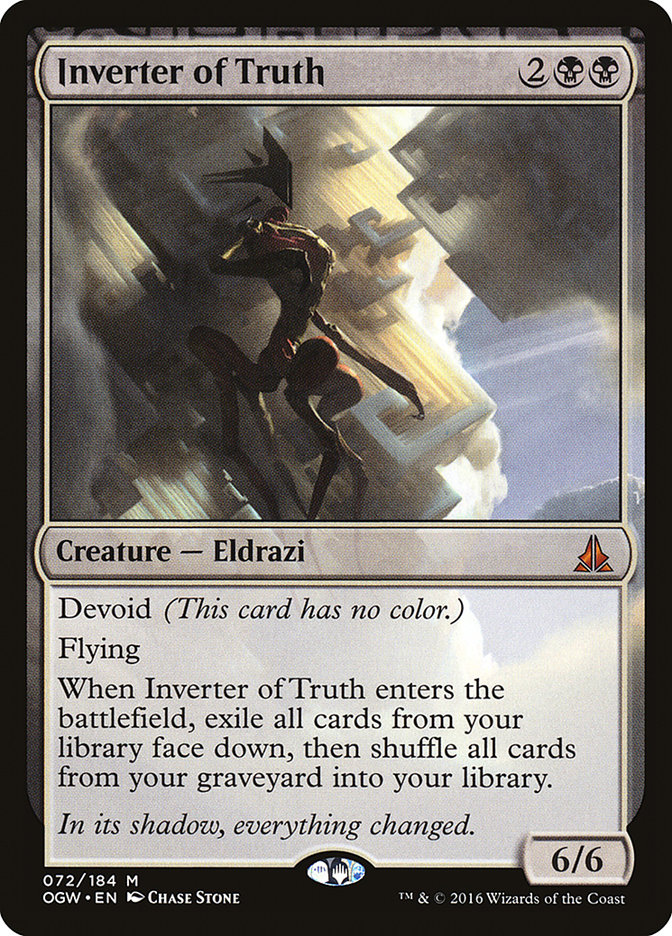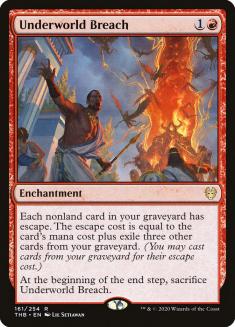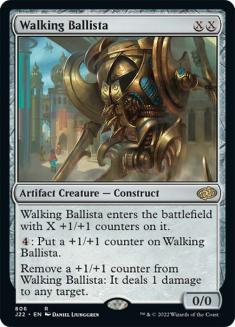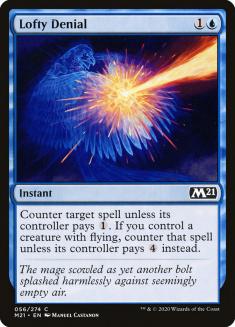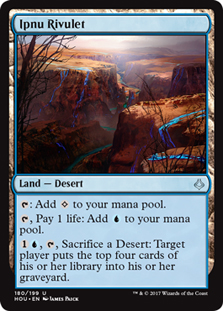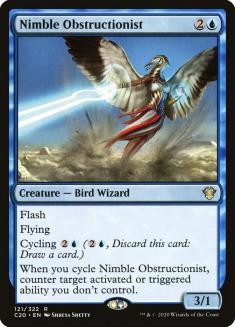Pioneer has been taking a lot of flak recently. The former darling of the competitive community has come full circle and is now the target of many a Twitter barb, especially after last Sunday’s Pioneer Challenge on Magic Online (MTGO) failed to get the necessary number of entrants to fire.
Simply put, the Pioneer metagame has grown stale. The shakeup from companions has come and gone, and we’re back to where the metagame was following Theros Beyond Death, with Dimir Inverter, Mono-White Devotion, Lotus Breach, and Sultai Delirium ruling over the metagame and a few other decks sitting on the fringe. After the opening phase of the format where bans happened almost weekly, it seems as though Wizards of the Coast (WotC) is exercising extreme restraint in taking further action, even though the calls for banning Inverter of Truth, Dig Through Time, Underworld Breach, and even Walking Ballista grow louder.
But the current state of Pioneer is calling me, challenging me to innovate. Because when I see stagnant metagames, I see opportunity. Everyone playing Pioneer right now has a firm expectation for what to encounter in a tournament, and we’re at the point where they are strongly incentivized to inbreed their decks to position themselves well against that expectation. That means a well-tuned rogue deck can magnify its natural advantage from being off the radar.
Looking over the current metagame, I see a lot of decks that are tapping out for three- and four-mana spells, and not a lot of cheap removal beyond Fatal Push. Nor is there much in the way of aggro decks, with just a few Mono-Red or straggling Lurrus Burn decks popping up. In that kind of metagame, I want to get aggressive but back it up with counterspells — a classic flash strategy. Ideally, that lets you prey on the dearth of removal while having a clear plan to disrupt the many game-winning combos in the metagame.
Fortunately, Core Set 2021 has brought with it a new toy that fits this strategy perfectly: Lofty Denial.
I wrote about Lofty Denial in my article last week, calling it one of the most underrated cards in the set. These kinds of decks are already playing a lot of flyers, and it will still be functional in many instances when you don’t have one on the battlefield, especially on Turn 2, which is when you’re most likely to only get the Force Spike mode.
In Pioneer, having a versatile counterspell that can protect your creatures from removal, slow down an aggressive deck, or stop a key spell in the mid-game is incredibly valuable, especially given how many prominent combos in the format utilize creatures, like Heliod, Sun-Crowned and Inverter of Truth.
The second point in Lofty Denial’s favor is there aren’t a lot of Teferi, Time Ravelers in the metagame right now. The control decks play a few copies at most, and the Heliod decks are back to Mono-White instead of Azorius. Teferi is the bane of a flash player’s existence, forcing you to play the early turns less aggressively than you would often like so that you can do your best to keep it off the battlefield. Without it, you’re free to develop as you wish, establishing your clock on the early turns while safe in the belief that you will be able to counter your opponent’s spells on Turns 4, 5, and 6 to press that early advantage.
So let’s look at a few different ways to develop this kind of strategy around Lofty Denial, starting with one of my favorite former Standard decks, Mono-Blue Aggro:
Creatures (19)
- 4 Siren Stormtamer
- 1 Pteramander
- 4 Spectral Sailor
- 4 Brineborn Cutthroat
- 4 Brazen Borrower
- 2 Sea-Dasher Octopus
Lands (21)
Spells (20)

This list also appeared in my article last week, but I’ve made a few key changes since then. First is the addition of Ipnu Rivulet to the manabase, which was simply an oversight. It costs virtually nothing, and in return gives you a slight boost to your matchup against Dimir Inverter. Given how popular that deck is these days, any additional edge there is more than welcome.
But that edge is especially welcome in a deck like this. On any given turn with Mono-Blue Aggro, you’re forced to find the right balance between developing your battlefield to apply more pressure to your opponent, and holding back your counterspells to disrupt your opponent’s gameplan. If you get too aggressive, a key spell may slip through the cracks and take over the game. But if you’re too passive, you may run out of answers before your creatures can close it out.
Dimir Inverter has much stronger late-game tools than Mono-Blue Aggro, so you need to end the game quickly, but the threat of the combo starts on their Turn 4, when they can cast Inverter of Truth. So you’re looking at two or three turns max to establish your clock before you have to start playing the disruption game against their combo, which can be inadequate if they draw a lot of Fatal Pushes and Thoughtseizes. Ipnu Rivulet forces them to hold off on the combo until at least Turn 6, buying you precious time to play through their disruption.
So don’t be discouraged if you don’t find yourself sacrificing Ipnu Rivulet very often, its effect on the game will often go unnoticed to everyone but your opponent.
Second is the addition of Nimble Obstructionist to the sideboard, which is also partially to help against Inverter. But its primary purpose is to act as a countermeasure to Blast Zone. As a deck that wants to protect one-mana threats with counterspells, Blast Zone is a nightmare, and it’s an important part of the Lotus Breach deck. Nimble Obstructionist is low-cost, since the flash flyer is perfectly fine, but any time it can tag a Blast Zone or Underworld Breach with the cycling trigger it makes a huge impact on the game. Low-risk, high-reward has been a winning formula in Magic for years, and It’s not stopping now.
I will say that the Lotus Breach matchup does worry me. Normally, a combo deck would be an ideal matchup, but Arboreal Grazer and Fae of Wishes are outstanding speed bumps and this deck doesn’t have good ways to remove them from the battlefield. Going wide is still a fine plan against those blockers, but having to do so makes you more vulnerable to Blast Zone, so I decided to tune the deck a bit toward that matchup.
Next I want to look at a deck that’s getting some hype in Core Set 2021 Standard but could be equally effective in Pioneer, Simic Flash:
Creatures (14)
- 1 Torrential Gearhulk
- 4 Spectral Sailor
- 4 Nightpack Ambusher
- 4 Brazen Borrower
- 1 Uro, Titan of Nature's Wrath
Lands (26)
Spells (20)
Sideboard

Outside of the manabase, this maindeck is almost entirely Standard-legal, which is a scary thought given how large the Pioneer format is. But when you consider how powerful the last year of sets has been, I think this deck stands up to what’s going on in Pioneer.
Nightpack Ambusher is the sexy card from green, but Growth Spiral is the real star. While Mono-Blue Aggro aims to gain an early-game advantage via its low curve, Simic uses Growth Spiral to generate a mana advantage and get to its more powerful threats quickly. I considered including some copies of Sylvan Caryatid to supplement the Spirals and play defense against aggro, but I couldn’t find space in this first pass. That said, it’s a card I’ll keep in mind if I find the deck needs to ramp more reliably.
The unsung card here is another new addition from Core Set 2021: Rewind. It narrowly missed being in the format by virtue of its reprinting in Magic 2013, and I wouldn’t be surprised if many players dismiss the card by mistakenly thinking it’s been in Pioneer this entire time and failed to break into the competitive scene.
My early impressions of Rewind in Core Set 2021 Standard have been very positive, and I think it’s powerful enough to see play in Pioneer so long as the metagame has a lot of tapping out for three-, four-, and five-mana spells. Being able to interact while also deploying a threat is a huge swing, and it doesn’t necessarily need to be Nightpack Ambusher to be worthwhile. Cycling a Shark Typhoon for two or resolving a Brazen Borrower still puts you in a great position, and even activating Spectral Sailor lets you build your own Cryptic Command.
The few non-Standard cards in the deck are there to bolster its late-game so you’re insulated against mana flood. Torrential Gearhulk has been largely held in check by Mystical Dispute, but it plays so well in this deck that I want to try one copy, and targeting Dig Through Time is about as good as it gets for the portly Snapcaster Mage.
Lastly, I’m going to look into an Izzet build of the Flash archetype, which strikes a balance between the low-curve aggression of Mono-Blue and the hard-hitting, more powerful Simic list:
Creatures (13)
Lands (24)
Spells (23)
- 4 Opt
- 1 Izzet Charm
- 3 Lightning Strike
- 3 Dig Through Time
- 2 Wild Slash
- 3 Ionize
- 3 Shark Typhoon
- 4 Lofty Denial
Sideboard

In a metagame with few aggro decks, going into red isn’t intuitive, but burn spells play incredibly well in Flash decks because they’re more than just removal. The reach they provide not only increases your clock, it does so in a way that is hidden from your opponent. Against nonred Flash decks, your opponent can freely use their life total as a resource to buy time against your disruption. When you have burn, doing so is much more perilous.
So the threat of your burn is at least as important as its effect. There will be games where your opponent is too cavalier and you unleash a flurry of fire to end the game on the spot, and there will also be games where your opponent feels the risk of being burned out is too great and is overaggressive, playing into your counterspells and falling even further behind.
The burn spells also help you clear away pesky blockers like Arboreal Grazer, Brazen Borrower, and opposing Shark tokens, so there’s enough functionality here beyond being mediocre removal spells for them to be attractive.
The additional reach means you want to take a more aggressive posture than Simic, hence the return of Brineborn Cutthroat and the addition of a maindeck copy of Nimble Obstructionist. This list also makes the best use of Dig Through Time. Not only does it have the most cheap spells, it also has the most variety of effects to find.
Honestly, it seems to me like everyone has simply accepted that there’s nothing left to explore in Pioneer, and are simply waiting for a ban to shake things up. Maybe that’s due to how the opening phase of the format set our expectations for Pioneer bans, or maybe Standard and Modern are interesting enough to keep everyone occupied, but I refuse to accept that the entirety of Pioneer has been explored in less than a year.
It took forever to find many of the Modern decks that we now look at as pillars of the format, and there’s been enough major shakeups over the course of Pioneer’s lifespan that ideas which didn’t work two, four, or six months ago are certainly worth revisiting.
Flash decks are in that group, since they were so prominent over the last year in Standard, but they haven’t been able to find their footing in Pioneer. Lofty Denial is a seemingly innocuous addition for them, but it’s an important one. There are so many other possibilities for the card in this format, from many-colored Flash lists to a refigured Spirits deck which supplements the power of Mausoleum Wanderer and Spell Queller with a more versatile counterspell.
There’s no sign that any major changes are coming to Pioneer, so I expect the format to continue narrowing and inbreeding in the coming weeks, and I intend to find a unique angle of attack for such a vulnerable metagame.


